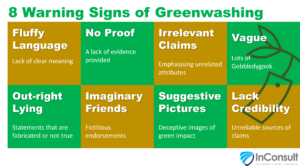In parts 1 and 2 of our special 3-part series, we explored the evolving landscape of climate disclosure and sustainability reporting. We covered Australia’s climate change journey to date, the new mandatory sustainability reporting laws and standards being introduced, and the implications for directors.
In part 3, we outline some of the significant challenges companies face in meeting sustainability reporting obligations, particularly with governance, strategy, metrics, and risk management.
The challenges
Other than the compliance challenges that will come from meeting reporting obligations in respect to the entity’s governance, strategy, metrics and targets and risk management, entities may need to consider and overcome some less obvious challenges including those listed below.
Greenwashing
A big risk with reporting will be “greenwashing”, or engaging in misleading and deceptive conduct, which is actionable under the Australian Consumer Law, Australian Securities and Investments Commission Act and Corporations Law. Companies should be aware, that ASIC has stated that it is prioritising “misleading conduct in relation to sustainable finance including greenwashing” in 2023 and 2024.

The legislation will provide reporting entities and their officers with limited protection for up to 3 years against actions for misleading and deceptive conduct brought by parties other than ASIC in relation to certain statements. This will include forward-looking statements made in the sustainability reports and auditors’ reports.
Data quality
Some of the most challenging parts of the disclosures will include:
- estimating of scope 3 emissions, particularly in large and complex supply chains;
- consistency and accessibility of climate scenarios and decarbonisation pathways across economies, sectors, industries and how they affect individual sectors or firms; and
- access to reliable and comparable sustainability data beyond emissions.
Record retention
Organisations must retain good, accurate records to support the decisions and determinations you make.
Silos
Entities should take a holistic approach to sustainability and decarbonisation, including goal setting, integrating its climate data and records from throughout the organisation into a centralised repository. The approach it takes to sustainability should be consistent across the organisation. The board must oversee and drive sustainability as it does its other business development strategies.
Future sustainability disclosures
While developing procedures to comply with climate disclosures, entities should keep in mind that whereas the current proposed measures, including the financial risks disclosure are directed to climate risks, the intention is that climate disclosures are the first priority for sustainable finance and reforms and platforms will subsequently include other sustainability-related issues. To this end, laws will be drafted to allow for expansion of financial disclosures to expand to nature-related issues.
Four areas to begin with
Reporting entities should start preparing now instead of waiting for the Bill to be enacted and the Sustainability Standards to be finalised. How burdensome the reporting process will be will largely depend on how far along the sustainability path the company is, and the resources and knowledge available to it.
Tackling the following questions will help you get ahead of reporting requirements:
1. Understand the law’s scope and applicability
Understand your company’s climate-related reporting obligations. What are differences between the Sustainability Standards and any current disclosures it makes?
Stay informed about upcoming regulations and plan for incremental implementation of new measures.
To reduce the risk of greenwashing, ensure accurate and truthful reporting and implement robust internal review processes.
2. Conduct a readiness assessment
Review your company’s current governance structures in respect to responsibilities and accountabilities around climate change as well as the skills, capabilities and resources available, including those needed to conduct climate-related scenario analyses. Where are the gaps?
3. Conduct a risk assessment
Conduct a risk assessment to understand your company’s exposure and vulnerability to climate-related risks and opportunities that could reasonably be expected to affect the company’s prospects and how it will respond to mitigate/adapt to/manage climate risks.
Determine your company’s strategy and the resilience of its business model to the direct and indirect effects of climate change.
Adopt widely accepted climate scenarios and regularly update scenarios based on latest research and data. Align with industry standards where possible.
What are the reasonable impacts likely to be of these climate influences on the company’s:
- performance and financial performance for the current reporting period, and the short, medium and long term?
- its strategy, financial planning and decision-making?
4. Data management and targets
Consider appropriate climate-related targets. How will your company measure and monitor and its progress in achieving its climate-related strategic goals and any externally driven targets its legally required to meet?
Can you collaborate with suppliers to obtain accurate data for estimating scope 3 emission?
Is the use of standardised methods of estimation appropriate for your organisation?
Can you leverage technology for data collection and analysis?
Does the company retain and manage all the necessary data for disclosures in a single centralized repository?
To address the risk of silos, foster cross-departmental collaboration and integrate climate data into all business processes.
Establish clear and measurable climate-related targets and monitor and report progress regularly.
The bottom line
The impending mandatory sustainability reporting requirements mark a pivotal shift in how Australian corporations must address their environmental responsibilities. As the global community intensifies its focus on combating climate change, pollution, and biodiversity loss, Australian companies must prepare for the stringent climate disclosure mandates being legislated.
The path to compliance may be challenging, but the rewards of safeguarding both the planet and long-term business viability are immense.
We are here to help you manage climate risk
By acting now, you can turn these challenges into opportunities, positioning your company as a leader in sustainability and corporate responsibility. Don’t wait for the legislation to take effect—begin your journey towards a more sustainable and resilient future today.
Together, let’s build a more sustainable tomorrow.
Contact us to embark on a journey towards authentic environmental stewardship and responsible business practices.
